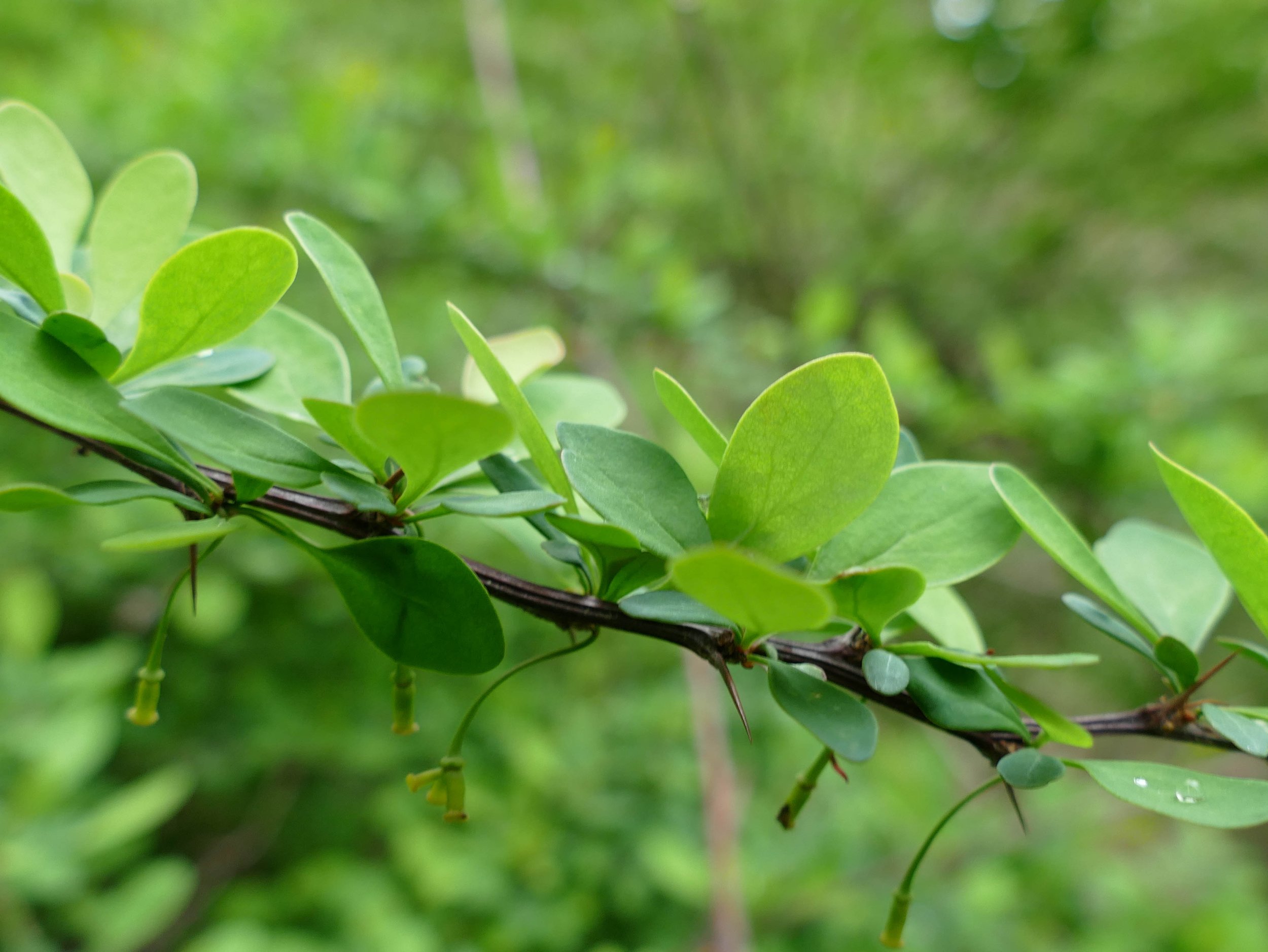
Japanese Barberry
Japanese Barberry is running wild in Beverly Shores. It is deer-resistent, replacing native species that the deer prefer. It leafs out early and holds its leaves late, forming dense thickets that shade out native plants. It contributes to Lyme Disease risk—research has found that removing wild barberry stands reduces the level of Lyme-carrying ticks.
Barberry at local home center
A young barberry in the wild
Barberry berries
-
Japanese barberry is a shrub with grooved stems and abundant thorns. It is a beautiful plant much loved by landscapers, and is sold at nearly every area garden center and big-box home center.
-
Japanese barberry does well in both sun and partial shade. Since deer don't like it, the plant takes over areas where deer browsing is significant. It likes a moist but well-drained environment.
-
Japanese barberry is rapidly displacing native plant species and creating impoverished monoculture areas. Under forest canopies where it does not have to compete with similar shrubs that need more light, it can form thick stands and displace native plants, reducing variety in wildlife habitat and forage. Dense stands of Japanese barberry can change the soil pH and reduce the layer of litter on the forest floor. This change in soil pH may in turn aid the spread of Japanese barberry, as well as prevent the regrowth of native species, even after eradication of the invasive species. Japanese barberry has denser foliage than most native plants, resulting in high humidity under their umbrella. The humidity makes for great tick habitat. Ticks become desiccated when humity drops below 80%, but relative humidity under a barberry is about 100% at night.
-
Japanese barberry has shallow roots, so small infestations can be dealt with by pulling it up. Wear gloves—its thorns are brutal. Pesticides also are effective. Glyphosate (Roundup) and Triclopyr (Bayer Brush Cutter, Garlon) are options.

